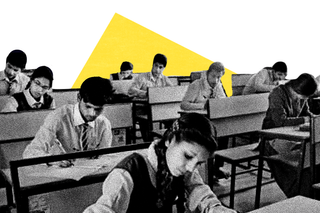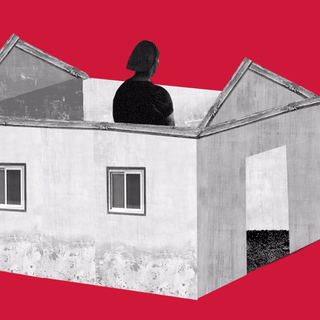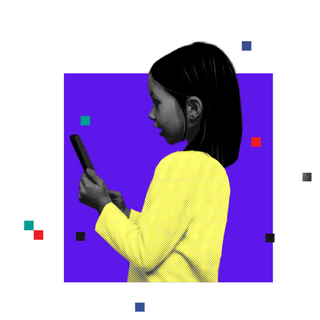
NCERT Issues Guidelines to Schools to Help Address Students’ Mental Health Problems
The framework was released after a survey found high prevalence of anxiety, fear of exams, and body image issues among children.

Stress, anxiety, peer pressure, bullying, body image issues — mental health issues tailor themselves differently for different students within a school setting. Yet, conversation within the space and awareness among educators and parents remains wanting. The National Council of Educational Research & Training (NCERT) recently advised schools to set up mental health advisory panels, along with dedicated programs that can identify depression, self-harm behavior, or other concerns and help with early treatment.
The guidelines, titled “Early identification and intervention for mental health problems in school-going children and adolescents,” were released in response to a nationwide survey that mapped mental health challenges among students. Among the 3,79,842 students in classes 6-12 surveyed, there was a high prevalence of anxiety, fear of exams, and body image issues. Two years of the pandemic, subsequent school closures, and limited access to digital resources have also severely disrupted learning. 51% of school students reported facing problems in learning online, only faintly echoing how education, and the school as a site of learning, have been transformed by the pandemic.
One recommendation was for schools to set up advisory panels, constituting parents, students, alumni, and teachers. “It will create awareness, and also plan and enforce age and gender-appropriate annual school mental health program. The schools should have a provision for identifying behavior, substance use and self-harm, depression, and developmental concerns, provide first aid and make appropriate referrals,” the manual noted.
The students surveyed noted that the anxiety was a result of the lack of mechanisms in place and the absence of support systems to discuss their feelings. The period between Classes 6 to 12th is also markedly a formative time, a shift from middle to high school that sparks unique challenges of its own. The report aptly noted that for children in this bracket, there is “identity crises, increased sensitivity towards relationships, peer pressure, fear of board examination, anxiety and uncertainty …for their future admissions, career, among other [challenges].” Even academics prove to be a source of anxiety as many students felt they would not be “respected” or valued if they didn’t perform well.
One key issue raised by the guidelines is the lack of awareness and training present among teachers and parents alike. In India, the taboo around mental health and the myth of hard work both create a culture of deliberate ignorance of the challenges students face. A*, 29, told The Swaddle earlier this year about the arduous nights she spent studying for the class 12th board examinations. “Her mother’s care and worry translated as preparing late-night snacks or bringing coffee, any way to help her push through the night – instead of encouraging more sustainable, even compassionate study plans that slotted in time for rest,” The Swaddle noted. According to the NCERT survey, almost 80% of students in Classes 9-12 suffer from anxiety due to exams and results.
The rigid prevalence of this culture demands a radical change in how the family and school system perceive mental health. “Teachers must be trained in identifying early signs in students for attachment issues, separation anxiety, school refusal, communication issues, anxiety patterns, depressive states, conduct-related issues, excessive internet use, hyperactivity, intellectual disability, and learning disabilities,” the report said.
Related on The Swaddle:
Illinois School Students Can Now Avail 5 Mental Health Days Every Year
One finding that also jumps out from the survey is that 45% of students attested to suffering from body image issues. This was more so for trans students (the survey termed them the “third gender”).
“Teachers should talk about bullying cases in class and empower students by educating them regarding bullying. They should provide a confidential way for students to report any incident which is of concern to them,” the guidelines stated.
In doing so, the teacher is reframed as a “primary caregiver” too who is critical in this channel of detecting early signs of mental health concerns. The message is also that the premise of education is not detached from “personal” or “individual” issues of anxiety or stress. Academia or learning or work are not spaces where the person’s mental health becomes an inconvenience or redundant. Students — especially school children who spend as much as a third of their days in school and a total of 220 days in a year in school across India — could benefit from this perspective.
One limitation of the recommendation within these guidelines is an unequal power dynamic. Hierarchical structures and a culture of discipline and authority within schools could render such panels moot, given how students may not easily trust teachers to confide in them. Mental health care, then, would have to involve giving agency back to students without subsuming their whole personhood under teachers’ authority.
The pandemic has further bolstered the pertinence of mental health advisories within schools. The Covid19 learning loss is only just beginning to reveal its extent: a recent government survey found that as many as 11% of Class 3 children lacked basic Math skills. One survey last year found as many as 92% of children have experienced a dip in their language skills. Covid19 has hampered learning and placed children two years behind on their learning targets. “The truth of it is likely that most kids are going to be two years behind when they come back to school. That in itself has some significant knock-on effects,” Akshay Saxena, co-founder of Avanti Fellows, told The Swaddle.
But along with the learning loss is a more intangible, abstract aspect of mental health and well-being that is harder to quantify and address. The education pandemic would mean greater anxiety and stress around writing exams, one of the metrics flagged by the NCERT survey. Moreover, as children spent more time at home, a crisis of loneliness and confinement within abusive homes would add to the mental health burden.
When placed within this context of loss, the role and responsibility of the school drastically change. It is a site where education is transacted, but also a space that must actively work towards addressing children’s concerns that have persisted even since before the pandemic.
Saumya Kalia is an Associate Editor at The Swaddle. Her journalism and writing explore issues of social justice, digital sub-cultures, media ecosystem, literature, and memory as they cut across socio-cultural periods. You can reach her at @Saumya_Kalia.
Related


Inside Indian Queer Youths’ Struggle to Find Home
